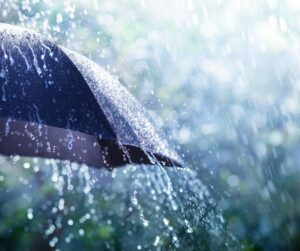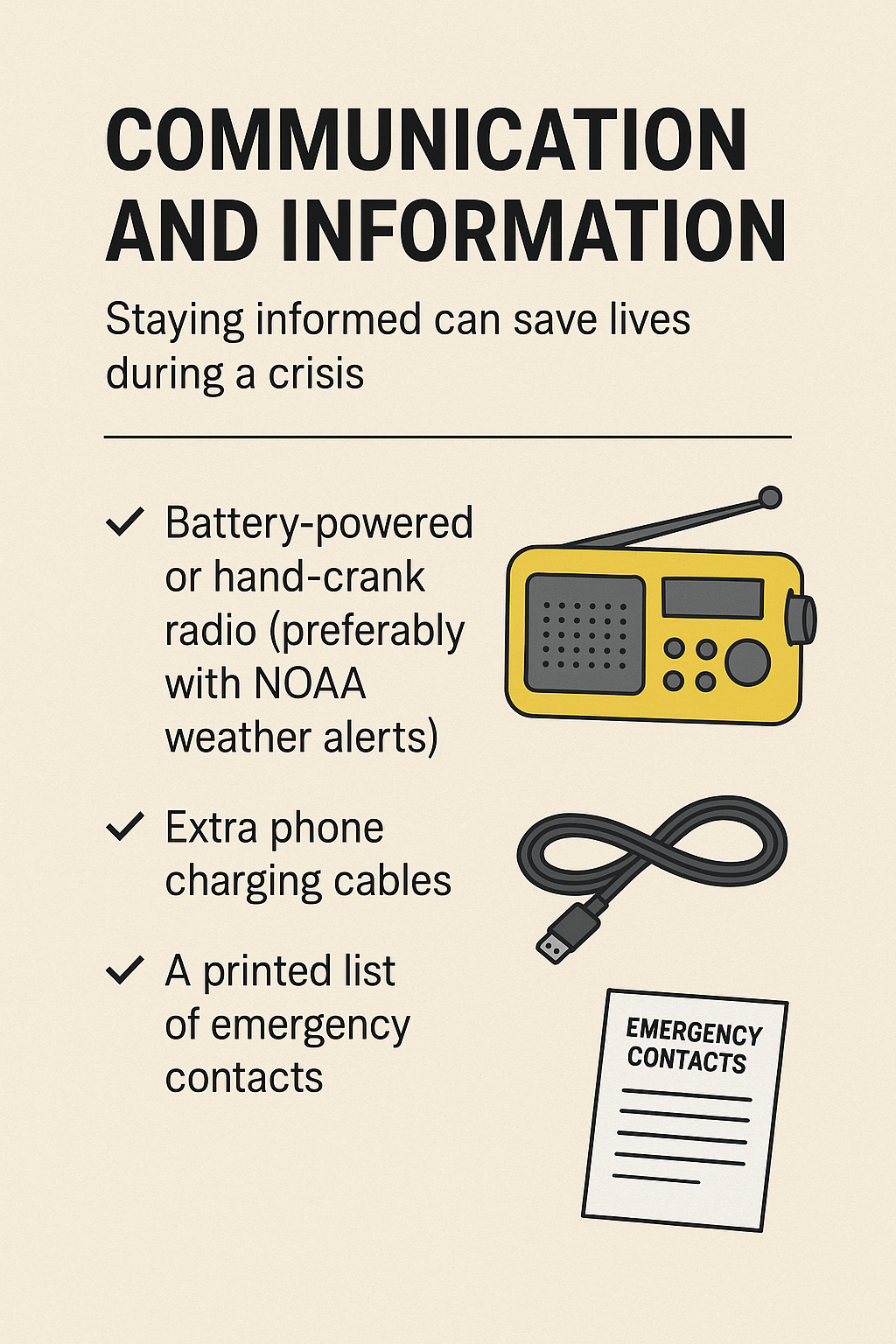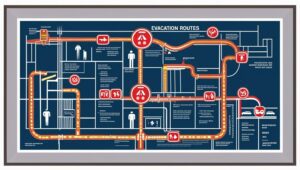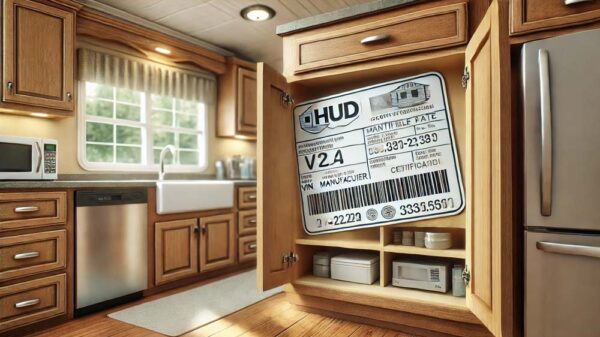Preparedness is more than just a buzzword—it is peace of mind. For mobile and manufactured homeowners, creating a reliable and well-stocked emergency kit is one of the most crucial steps in ensuring safety, security, and resilience during unforeseen events. Whether it’s severe weather, power outages, or natural disasters, having the right supplies readily available can make the difference between chaos and calm. Building an Emergency Kit for Mobile Home Preparedness is crucial.
This guide will walk through everything you need to know about building the perfect emergency kit for your mobile home, from essential supplies to storage strategies, and why preparation is especially important for mobile home living.
Why Mobile Home Preparedness Matters
Mobile homes provide comfort, affordability, and flexibility, but they also come with unique considerations when it comes to emergencies. Their lighter construction makes them more vulnerable to extreme winds and weather events. Power disruptions can be more disruptive in a mobile home community, and limited storage space can make stockpiling tricky. That’s why Building an Emergency Kit for Mobile Home Preparedness tailored to your lifestyle is not optional—it’s essential.
By creating a comprehensive emergency kit, you ensure that you and your family are ready to handle a wide range of scenarios without panic or unnecessary hardship.
Step 1: Understanding Possible Emergencies
The foundation of any strong emergency kit begins with knowing exactly what you’re preparing for. Emergencies come in many forms, and for mobile homeowners, the unique structure and location of the home can make certain risks more likely than others. By taking time to identify the hazards that could affect your area, you can build a kit that’s not only comprehensive but also tailored to your family’s specific needs.
1. Natural Disasters
-
Severe Storms & Tornadoes: Mobile homes are more vulnerable to high winds than site-built houses. Understanding tornado risks and having sturdy shelters or safe evacuation plans in place is essential.

-
Flooding: Homes located near rivers, lakes, or coastal areas are at risk. Floodwaters can rise quickly, cutting off roads and utilities. Supplies like waterproof containers, extra water, and backup communication tools become crucial.
-
Wildfires: In dry regions, fire spreads rapidly. A mobile home may not offer much resistance, so having an evacuation plan, masks for smoke inhalation, and important documents ready to grab is key.
-
Earthquakes: In certain regions, ground movement may shift or damage a manufactured home. Emergency tools, first-aid kits, and plans to turn off utilities help minimize risks.
2. Utility Failures
Mobile homes rely heavily on consistent power, water, and gas. A sudden outage can quickly create unsafe conditions. For example:
-
Power Outages: Loss of heating or cooling in extreme weather can be dangerous. Flashlights, backup batteries, and portable chargers should be included in your kit.
-
Water Shortages: If pipes freeze, break, or water supplies are cut off, bottled water and purification tablets become vital.
-
Gas Leaks: In manufactured homes, propane or natural gas leaks pose fire and health hazards. Having a gas shutoff tool and emergency contacts ready could save lives.
3. Health and Medical Emergencies
Emergencies aren’t always weather-related. A family member could suffer from a severe allergic reaction, an injury, or a chronic condition requiring medication. Having prescription backups, first-aid supplies, and health records ensures you’re prepared when professional help isn’t immediately available.
4. Community-Specific Risks
Every community has unique threats. If you live near an industrial area, chemical spills may be a risk. Rural areas might face slower emergency response times. Even seasonal events, like heavy snow in the north or hurricanes in the south, dictate the type of supplies you’ll want to stock.
5. Conducting a Personal Risk Assessment
To fully understand possible emergencies, sit down with your family and ask:
-
What disasters are most common in our region?
-
Are there people in our household with special needs (medical, mobility, dietary)?
-
How long could we be cut off from services during an emergency?
-
Where is the nearest shelter or safe evacuation route?
By answering these questions, you can prioritize your supplies. For instance, a family in Florida will place hurricane readiness at the top of their list, while someone in Oklahoma will prepare more extensively for tornadoes.
The Key Takeaway: Understanding possible emergencies is about more than just identifying dangers — it’s about tailoring your emergency kit so that it directly supports your family’s safety in the most likely scenarios. With this knowledge, your kit becomes a practical, life-saving tool instead of a random collection of supplies.
Step 2: Building the Essentials of Your Mobile Home Emergency Kit
Once you’ve identified the possible emergencies that could affect your area, the next step is to put together a strong foundation of supplies. These essentials are the backbone of your kit, ensuring your family can survive the first critical hours or days of a crisis. While each household’s needs will differ slightly, the following categories provide a clear roadmap for assembling a reliable and effective emergency kit for mobile home living.
1. Water – The #1 Priority
Water is the most important item in any emergency kit. A general rule is to store one gallon of water per person per day for at least three days. This covers both drinking and minimal sanitation. For families in hot climates or with pets, more may be necessary. Consider:
-
Bottled water stored in a cool, dry place.
-
Water purification tablets or a portable filter in case your bottled supply runs out or becomes contaminated.
-
Collapsible water containers that can be filled quickly if you know a storm or outage is coming.
2. Food – Non-Perishable and Easy to Prepare
When power is out, cooking options are limited, so your food supply should require little to no preparation. Stock up on:
-
Canned goods (vegetables, beans, meats, soups).
-
Ready-to-eat meals (like MREs).
-
Granola bars, trail mix, dried fruit, and peanut butter.
-
A manual can opener (don’t overlook this small but essential tool).
-
Pet food if you have animals in your home.
3. Light and Power Sources
Power outages can leave you in the dark, so lighting and portable energy are critical. Include:
-
Flashlights (one for each family member).
-
Extra batteries stored separately in waterproof packaging.
-
Battery-powered or hand-crank lanterns for general lighting.
-
Portable phone chargers or solar chargers to keep communication devices working.
4. First Aid and Medical Supplies
A well-stocked first aid kit is non-negotiable. It should cover both minor injuries and basic emergency care until help arrives. Essentials include:
-
Adhesive bandages, gauze, and antiseptic wipes.
-
Tweezers, scissors, and medical tape.
-
Over-the-counter medications (pain relievers, allergy medicine, anti-diarrheal tablets).
-
Prescribed medications (at least a week’s supply in labeled containers).
-
Copies of medical records and emergency contact information.
5. Tools and Safety Gear
Practical tools can make a significant difference in managing your mobile home during an emergency. Consider:
-
Multipurpose tool or Swiss Army knife.
-
Duct tape and plastic sheeting (for temporary shelter or sealing leaks).
-
Gloves and dust masks (especially for storms, wildfires, or debris cleanup).
-
A whistle to signal for help if trapped.
-
Wrench or pliers for turning off utilities like gas or water.
6. Communication and Information
Staying informed can save lives during a crisis. Add to your kit:
-
Battery-powered or hand-crank radio (preferably with NOAA weather alerts).

-
Extra phone charging cables.
-
A printed list of emergency contacts in case phones lose power.
-
Local maps in case GPS becomes unavailable.
7. Shelter and Warmth
Mobile homes can lose temperature quickly in both summer and winter if the power is out. To keep your family safe:
-
Emergency blankets or sleeping bags (preferably rated for cold weather).
-
Ponchos or rain gear.
-
Portable hand warmers.
-
A change of clothes for each family member, stored in waterproof bags.
8. Hygiene and Sanitation Supplies
Sanitation issues can become health hazards quickly, especially if plumbing is unavailable. Include:
-
Moist towelettes and hand sanitizer.
-
Toilet paper and paper towels.
-
Heavy-duty trash bags for waste disposal.
-
Feminine hygiene products and diapers if needed.
-
Portable camping toilet or bucket system with liners for longer outages.
9. Important Documents and Cash
In many emergencies, you may need to prove identity, ownership, or insurance coverage. Store copies of:
-
IDs, insurance policies, and bank account records.
-
Mobile home title or lease documents.
-
Emergency cash in small bills (ATMs and card readers may not work).
10. Special Needs Items
Every family is different, so tailor your kit with items unique to your household:
-
Baby supplies (formula, bottles, wipes).
-
Medical equipment (spare glasses, hearing aid batteries).
-
Comfort items for children (a favorite toy or blanket).
-
Supplies for pets (leash, crate, vaccination records).
Pro Tip: Instead of throwing everything into one large container, organize supplies into labeled bins or backpacks. For example, have one bin for food and water, another for first aid, and another for tools and communication. This organization makes it much easier to grab exactly what you need in an emergency without wasting time searching.
The Key Takeaway: Your emergency kit should meet immediate survival needs — food, water, safety, and communication — while also accounting for your family’s unique situation. Building it piece by piece ensures you won’t overlook critical supplies, and organizing it well guarantees you can access what you need the moment disaster strikes.
Step 3: Creating a Family Emergency Plan
Having an emergency kit is only half the battle; the other half is knowing exactly what to do when disaster strikes. A family emergency plan gives every member of your household the confidence to act quickly, stay safe, and remain connected no matter the situation. For mobile home owners, this is especially important because severe weather, power outages, or structural damage can happen suddenly, leaving very little time to react.
1. Establish Clear Communication Methods
When emergencies hit, communication systems can become overloaded or fail entirely. That’s why it’s crucial to have multiple ways to stay in touch.
-
Primary Communication: Cell phones are usually the first choice. Make sure everyone knows how to text as well as call, since texts often go through when calls won’t.
-
Backup Communication: Walkie-talkies, two-way radios, or even CB radios can be lifesavers when networks are down.
-
Emergency Contacts: Write down a list of key numbers, including family, neighbors, doctors, and local emergency services. Keep copies in wallets, emergency kits, and vehicles.
2. Identify Meeting Places
If your mobile home becomes unsafe or family members are separated, having designated meeting places prevents confusion and panic. Choose:
-
An immediate safe spot — such as a neighbor’s home or storm shelter nearby.
-
A neighborhood meeting point — like a church, community center, or park.
-
An out-of-town location — the home of a relative or friend outside your immediate area in case of evacuation.
3. Plan for Evacuations
Mobile homes may require quicker evacuation than traditional houses, especially during tornadoes, hurricanes, or wildfires. To be ready:
-
Know your evacuation routes and practice them.

-
Keep a go-bag packed with essentials (water, snacks, medications, documents).
-
Have a fuel reserve for your vehicle, since gas stations may be closed or crowded.
-
If you don’t drive, make arrangements with neighbors or local services ahead of time.
4. Assign Roles and Responsibilities
In stressful situations, everyone should know their job. Assigning responsibilities helps avoid chaos. For example:
-
One adult checks on utilities (turning off propane, water, or electricity if necessary).
-
Another gathers the emergency kit and communication devices.
-
Older children might be in charge of pets or grabbing comfort items.
-
Everyone should know who is responsible for checking on elderly relatives or neighbors.
5. Practice Emergency Drills
Plans only work if everyone knows them well. Set aside time at least twice a year to run through your emergency scenarios.
-
Practice evacuating your mobile home quickly and safely.
-
Simulate a power outage and use only your kit supplies for an evening.
-
Role-play different emergencies (tornado, flood, fire) to reinforce confidence.
-
Evaluate after each drill: What worked? What could be improved?
6. Include Children in the Planning
Kids often feel the most scared during disasters, but involving them helps reduce fear and builds resilience.
-
Teach them how to call 911 and what to say.
-
Create a kid-friendly version of the emergency plan (with pictures or simple steps).
-
Encourage them to keep a small backpack of comfort items like a favorite stuffed toy, coloring book, or flashlight.
7. Plan for Pets
Your pets are family too, and they need to be included in your emergency plan.
-
Identify pet-friendly shelters or hotels in case of evacuation.
-
Pack a small pet emergency kit (food, water, leash, vaccination records).
-
Make sure pets are microchipped and wear ID tags.
8. Account for Special Needs
Every household is unique. Consider if anyone requires extra help or resources.
-
Elderly family members may need medical devices or transportation assistance.
-
People with disabilities may need accessible sheltering arrangements.
-
Keep a backup supply of critical medical equipment and note where it can be accessed quickly.
9. Stay Informed During Emergencies
Your plan should include how your family will receive updates.
-
Use a NOAA weather radio or apps with emergency alerts.
-
Follow official city or county emergency management websites and social media.
-
Identify local shelters ahead of time.
10. Write It Down and Share It
The most effective emergency plans are written, shared, and reviewed often.
-
Post a copy in a central location in your home.
-
Store digital versions on phones or cloud accounts.
-
Share the plan with extended family and trusted neighbors who may need to help in an emergency.
The Key Takeaway: A family emergency plan ensures that when disaster strikes, your household can act quickly and confidently rather than scrambling in panic. By establishing communication, practicing drills, and assigning roles, your family will be ready to face emergencies together with clear direction and peace of mind.
Step 4: Securing Your Mobile Home Against Hazards
Mobile homes, while comfortable and affordable, can be more vulnerable than traditional houses when it comes to natural disasters and emergencies. The key to safety is proactive preparation. By reinforcing your mobile home and reducing potential risks, you not only protect your property but also give your family a greater chance of staying safe during an emergency.
1. Anchor and Tie-Down Systems
Mobile homes must be securely anchored to the ground to withstand strong winds.
-
Check Existing Tie-Downs: Inspect straps and anchors at least once a year for rust, wear, or looseness.
-
Upgrade If Needed: Older homes may have outdated systems. Consider upgrading to modern anchors designed for your region’s weather risks.
-
Professional Inspection: Hire a licensed installer to make sure your home meets local safety codes.
2. Reinforce Windows and Doors
Windows and doors are common weak points during storms.
-
Storm Shutters: Install shutters or pre-cut plywood panels that can be quickly secured before a storm.

-
Impact-Resistant Glass: In high-risk areas, consider replacing windows with impact-resistant models.
-
Strong Door Frames: Ensure exterior doors are reinforced with heavy-duty locks and secure hinges.
3. Protect the Roof
The roof is often the most vulnerable part of a mobile home in severe weather.
-
Regular Inspections: Look for leaks, missing shingles, or rust on metal roofs.
-
Sealants and Coatings: Apply roof sealant to prevent water intrusion.
-
Roof Overhangs: Minimize overhangs, as they can catch wind and cause uplift.
-
Roof Reinforcement: In hurricane-prone areas, consider professional reinforcement to keep the roof attached to walls.
4. Skirting and Foundation Protection
The area beneath your mobile home is critical for stability.
-
Durable Skirting: Use heavy-duty skirting that can withstand wind and impact.
-
Ventilation and Drainage: Ensure skirting allows airflow and water drainage to reduce mold and structural damage.
-
Flood Barriers: If you live in a flood zone, elevate the home and install barriers to minimize water damage.
5. Fire Safety Precautions
Fire hazards can spread quickly in mobile homes, making prevention essential.
-
Smoke Detectors: Install detectors in each room and test them monthly.
-
Fire Extinguishers: Place extinguishers in the kitchen, bedrooms, and near exits.
-
Safe Heating Sources: Keep space heaters away from flammable items, and inspect furnaces yearly.
-
Defensible Space: If in a wildfire-prone area, clear brush, leaves, and debris at least 30 feet away from your home.
6. Weatherproofing for Power Outages
Outages can make mobile homes unsafe if you aren’t prepared.
-
Backup Power: Consider a generator or solar-powered backup for essential devices.
-
Insulation: Improve insulation to keep your home warmer in winter and cooler in summer during outages.
-
Surge Protection: Use surge protectors to shield appliances from power spikes.
7. Secure Outdoor Structures and Items
During high winds, loose items become dangerous projectiles.
-
Anchor Sheds and Carports: Securely tie down any outdoor structures.
-
Store Loose Items: Bring in grills, furniture, and toys before storms.
-
Trim Trees: Cut back weak branches that could fall onto your mobile home.
8. Water and Plumbing Safety
Leaks and frozen pipes can create emergencies of their own.
-
Shut-Off Valves: Know where your water shut-off is located.
-
Insulate Pipes: Wrap exposed pipes to prevent freezing in cold weather.
-
Backflow Prevention: Install devices to keep floodwaters from contaminating your water supply.
9. Consider Professional Upgrades
Some reinforcements are best done by experts.
-
Retrofits: Add reinforcements that bring your mobile home closer to HUD safety standards.
-
Storm Shelters: If you live in tornado alley or hurricane zones, installing a nearby storm shelter is one of the best safety investments.
10. Regular Maintenance and Inspections
The best defense is prevention.
-
Inspect tie-downs, skirting, and roofing twice a year.
-
Schedule professional safety inspections, especially if your mobile home is older.
-
Keep records of all maintenance and upgrades to ensure compliance with local safety codes.
The Key Takeaway: Securing your mobile home against hazards not only protects the structure but also safeguards your family’s lives. Reinforcement, weatherproofing, and ongoing maintenance turn a vulnerable home into a much safer place to withstand emergencies.
Step 5: Emergency Planning Beyond the Kit
-
Develop a Family Emergency Plan
-
Having a kit is just the beginning. Your family should have a clear, written plan detailing what to do in various emergencies, whether it’s a fire, severe storm, power outage, or medical situation.
-
Designate roles for each family member, such as who grabs the emergency kit, who contacts relatives, or who checks on pets. Clear responsibilities reduce confusion and panic during an actual emergency.
-
-
Plan Communication Strategies
-
Phone lines and cell towers can become overloaded during disasters. Establish multiple ways to communicate with family members, such as text messages, email, social media, or pre-arranged meeting points.
-
Keep a printed list of important contacts, including neighbors, local emergency services, and out-of-town relatives who can act as communication hubs if local networks fail.
-
-
Map Out Safe Locations
-
Identify safe areas both inside and outside your home. For example, storm shelters, interior rooms without windows for tornadoes, or elevated areas for floods.
-
Know evacuation routes, including alternatives if main roads are blocked. Practice these routes with your family to make them second nature.
-
-
Practice Drills Regularly
-
Conduct fire drills, earthquake drills, or evacuation exercises periodically. Practicing ensures everyone knows what to do under pressure and reveals any gaps in your plan.

-
Include scenarios for night-time emergencies when family members may be asleep, as this often changes response times and logistics.
-
-
Consider Special Needs
-
Account for children, elderly family members, pets, and anyone with medical conditions. Keep extra supplies for medications, mobility aids, or other special items.
-
Make sure your emergency plan is accessible to everyone, including those with disabilities or language barriers.
-
-
Stay Informed
-
Sign up for local emergency alerts via phone apps, text, or email. Know the difference between warnings, watches, and advisories to respond appropriately.
-
Keep a battery-powered radio as part of your kit for updates if the power or internet goes out.
-
-
Include Recovery Planning
-
Emergencies don’t end when the immediate threat passes. Plan for temporary shelter, food resupply, and cleanup.
-
Keep important documents (ID, insurance papers, property records) in a waterproof and portable container for easy access during recovery.
-
In short, Step 5 is about creating a living, actionable plan. Supplies are critical, but knowing how to use them, communicate, and respond strategically is what truly increases safety during emergencies. It turns a kit from a static collection of items into a dynamic system that protects your household.
Emergency Planning Beyond the Kit – Family Checklist
1. Family Roles & Responsibilities
-
☐ Assign a primary emergency leader
-
☐ Assign backup leader
-
☐ Assign person to grab emergency kit
-
☐ Assign communication lead
-
☐ Assign pet care responsibilities
2. Communication Plan
-
☐ List phone numbers of family, neighbors, and out-of-town contacts
-
☐ Choose primary & secondary meeting points
-
☐ Decide on text/email/social media backup if phones fail
-
☐ Keep printed contact sheet in emergency kit
3. Safe Locations
-
☐ Identify interior safe rooms in your home (storm/tornado)
-
☐ Identify evacuation routes and alternatives
-
☐ Locate local shelters
-
☐ Plan temporary safe spots for pets
4. Practice Drills
-
☐ Conduct fire drills quarterly
-
☐ Conduct tornado/earthquake drills annually
-
☐ Practice evacuation with all family members
-
☐ Include night-time emergency drills
5. Special Needs
-
☐ Extra medications & medical supplies
-
☐ Mobility aids & accessibility items
-
☐ Baby or child necessities (diapers, formula, etc.)
-
☐ Pet food, water, and supplies
6. Stay Informed
-
☐ Sign up for local emergency alerts
-
☐ Keep battery-powered radio ready
-
☐ Review emergency plans when alerts are issued
7. Recovery Planning
-
☐ Store important documents in waterproof container
-
☐ Plan for temporary shelter & resupply
-
☐ Document home inventory for insurance
-
☐ Review and update plan after drills or emergencies
✅ Tip: Post this checklist in a central place at home and review it with your family regularly. A visual reminder helps everyone stay prepared and confident.
Step 6: Customizing Your Kit for Regional Risks
1. Understand Local Hazards
Different regions face different natural or man-made threats. Consider:
-
Flood-prone areas: You’ll need waterproof containers, water rescue gear, and supplies elevated above floor level.
-
Earthquake zones: Include sturdy shoes, gloves, a pry bar, and extra food/water in case infrastructure collapses.
-
Hurricane regions: Stock tarps, duct tape, battery-powered fans, and hurricane-rated flashlights.
-
Winter storm areas: Extra blankets, snow shovels, ice melt, and hand warmers become essential.
-
High wildfire risk areas: Include N95 masks, goggles, fire blankets, and fire-resistant clothing.
2. Account for Regional Medical Needs
Certain areas might have higher risks for specific injuries or illnesses:
-
Tick-borne diseases: Include insect repellent and tick removal tools.
-
Allergies or endemic diseases: Consider extra medications relevant to the region.
3. Customize Food and Water
-
In hot climates, include electrolyte drinks and sun-protective items.
-
In cold climates, include high-calorie, easily stored foods and ways to melt snow for water.
-
Adjust water quantities based on climate—hot areas require more hydration.
4. Include Regional Tools and Equipment
Think about tools that make sense for your environment:
-
Mountains or forests: Compass, topographic map, rope, and portable stove.
-
Coastal areas: Waterproof bags, fishing gear, and emergency flotation devices.
-
Urban environments: Multi-purpose tools, dust masks, and extra batteries for electronic communication.
5. Keep It Updated
Regional risks can change—wildfire seasons can shift, new construction may affect flooding patterns, or local regulations may change emergency requirements. Regularly review and update your kit to stay relevant.
By customizing your kit for regional risks, you’re not just being prepared—you’re being prepared smartly, ensuring that every item has a purpose for the threats you’re actually likely to face.
Step 7: Maintenance and Review
1. Regularly Check Expiration Dates
Many kit items have a shelf life:
-
Food: Rotate canned or packaged food at least once a year to avoid spoilage.
-
Medications: Prescription and over-the-counter medications can lose effectiveness over time. Replace them as needed.
-
Batteries: Replace batteries in flashlights, radios, and other devices regularly, ideally once a year.
2. Inspect Equipment
Tools and supplies can degrade or get damaged:
-
Flashlights, radios, and stoves: Test them to ensure they work.
-
Tents, tarps, and ropes: Check for tears, fraying, or mold.
-
Clothing and blankets: Make sure they are still warm and intact.
3. Update Personal Information
Your kit should reflect your current circumstances:
-
Emergency contacts: Verify phone numbers and addresses.
-
Medical information: Update allergy info, prescriptions, or health conditions.
-
Family needs: Adjust supplies for new family members, pets, or changing ages of children.
4. Seasonal Adjustments
Some items may need to change with the seasons:
-
Add sunscreen, hats, and cooling items for summer.
-
Add extra blankets, hand warmers, and winter clothing for colder months.
5. Reassess Regional Risks
Emergencies aren’t static. Consider:
-
Changes in local weather patterns or natural disaster frequency.
-
Construction, urban expansion, or environmental changes that may affect evacuation routes or hazards.
6. Conduct Practice Drills
Maintenance isn’t just about the kit itself—it’s also about readiness:
-
Run periodic drills to see if everyone in your household knows where the kit is and how to use it.
-
Practice using tools, first aid supplies, and communication devices under realistic conditions.
Key Takeaway
Maintenance and review turn a static collection of items into a dynamic, reliable survival system. By keeping everything updated, tested, and aligned with your current needs, you ensure that when disaster strikes, your kit is truly ready.
Step 8: Advanced Preparedness for Long-Term Scenarios
1. Expand Food and Water Supplies
-
Long-term food storage: Include freeze-dried, canned, and vacuum-sealed foods that can last months or years. Focus on high-calorie, nutrient-dense options.
-
Water storage: Keep large-capacity containers or water barrels. Consider water purification methods (filters, tablets, or UV purifiers) in case stored water runs out.
-
Rotation plan: Periodically rotate supplies to ensure freshness and usability.
2. Power and Energy Solutions
-
Alternative power: Solar panels, portable generators, or hand-crank devices can provide electricity during extended outages.
-
Battery storage: Maintain rechargeable batteries and backup charging systems for essential devices.
-
Energy conservation: Have strategies to limit power usage while maximizing critical functions (lighting, communication, refrigeration).
3. Shelter and Climate Adaptation
-
Portable shelters: Tents, tarps, and sleeping bags rated for extreme conditions are essential if your home becomes unsafe.
-
Insulation and heating/cooling: Stock extra blankets, sleeping pads, or compact heating/cooling devices.
-
Weatherproofing: Learn basic methods to reinforce your home against extreme weather.
4. Medical and Health Preparedness
-
Extended first aid: Include extra supplies such as bandages, antiseptics, prescription medications, and over-the-counter essentials for longer-term care.
-
Self-care tools: Consider items for dental care, wound care, and basic health monitoring.
-
Knowledge is key: Learn basic first aid, CPR, and emergency medical procedures.
5. Security and Personal Safety
-
Emergency communications: Two-way radios, satellite phones, or ham radios can help maintain contact when traditional networks fail.
-
Self-defense: Non-lethal options and strategies for personal protection, depending on local regulations.
-
Situational awareness: Plan escape routes, safe locations, and strategies for staying informed.
6. Skills and Knowledge
Long-term preparedness is as much about skills as supplies:
-
Food preservation (canning, drying, fermenting)
-
Water sourcing and purification
-
Navigation and basic survival techniques
-
Emergency repair and maintenance of shelter and tools
7. Community and Networking
-
Neighbors and local groups: Long-term survival is easier with a support network.
-
Resource sharing: Collaborate on bulk storage, tools, or skills exchange.
-
Information: Stay connected to local alerts and regional emergency plans.
Key Takeaway
Advanced preparedness isn’t just “more stuff”—it’s strategic planning, sustainable resources, and skill development. By preparing for long-term scenarios, you ensure your household can survive extended emergencies with safety, health, and resilience.
Long-Term Preparedness Checklist
1. Food & Water
-
☐ Store at least 2 weeks to 3 months of non-perishable food (canned, freeze-dried, vacuum-sealed).
-
☐ Include nutrient-dense, high-calorie items (nuts, grains, beans, protein bars).
-
☐ Maintain extra water: 1 gallon per person per day, plus storage for pets.
-
☐ Stock water purification methods (filters, tablets, UV purifiers).
-
☐ Plan for food rotation to keep supplies fresh.
2. Power & Energy
-
☐ Backup power sources (solar panels, portable generator, hand-crank devices).
-
☐ Rechargeable batteries and backup charging systems for devices.
-
☐ LED flashlights, lanterns, and candles.
-
☐ Energy conservation plan for essential functions (lighting, refrigeration, communication).
3. Shelter & Climate
-
☐ Portable shelters (tents, tarps, sleeping bags rated for extreme conditions).
-
☐ Extra blankets, sleeping pads, and clothing for seasonal changes.
-
☐ Weatherproofing materials to reinforce home (tarps, plastic sheeting, duct tape).
-
☐ Plan for safe indoor areas if evacuation is necessary.
4. Medical & Health
-
☐ Extended first aid kit (bandages, antiseptics, splints, medications).
-
☐ Prescription medications for at least 1–3 months.
-
☐ Over-the-counter essentials (pain relievers, anti-diarrheal, allergy meds).
-
☐ Personal hygiene supplies (soap, toothbrushes, feminine products, hand sanitizer).
-
☐ Skills: basic first aid, CPR, wound care, and health monitoring.
5. Safety & Security
-
☐ Emergency communications (two-way radios, satellite phone, ham radio).
-
☐ Non-lethal self-defense tools (as permitted locally).
-
☐ Escape routes and safe location plans.
-
☐ Fire extinguishers and smoke/carbon monoxide detectors checked regularly.
-
☐ Situational awareness: monitor local alerts and emergency channels.
6. Skills & Knowledge
-
☐ Food preservation (canning, drying, fermenting).
-
☐ Water sourcing and purification techniques.
-
☐ Basic navigation and survival skills (map reading, compass use).
-
☐ Shelter construction, repair, and maintenance.
-
☐ Basic mechanical and electrical repair skills for home and tools.
7. Community & Networking
-
☐ Develop local support networks (neighbors, family, community groups).
-
☐ Plan resource sharing (tools, food, medical supplies).
-
☐ Participate in community emergency drills if available.
-
☐ Maintain access to regional emergency information and alerts.
✅ Tip: Review this checklist every 6–12 months to update supplies, check expiration dates, and refresh skills.
Conclusion
Building an emergency kit for mobile home preparedness is one of the smartest investments you can make for your family’s safety and well-being. While mobile homes offer flexibility and affordability, they also require proactive measures to handle emergencies effectively. By stocking a comprehensive kit, planning ahead, and tailoring supplies to your region, you’re ensuring that when the unexpected happens, you’re ready to face it head-on.
Preparedness isn’t about fear—it’s about confidence. And with the right emergency kit, you can live in your mobile home with peace of mind, knowing you’re ready for whatever comes your way.









